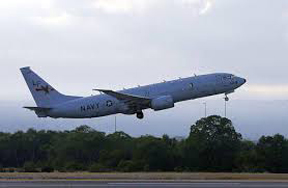 PERTH: Describing it as the “most promising” lead yet, a top Australian official today said that vessel searching for the missing Malaysian plane has detected signals consistent with those emitted by aircraft black box, nearly a month after the jet carrying 239 people mysteriously vanished.
PERTH: Describing it as the “most promising” lead yet, a top Australian official today said that vessel searching for the missing Malaysian plane has detected signals consistent with those emitted by aircraft black box, nearly a month after the jet carrying 239 people mysteriously vanished.
Australian defense vessel Ocean Shield has detected signals consistent with those from aircraft black boxes twice, once for more than two hours in the Indian Ocean, said Air Chief Marshal (retd.) Angus Houston, the head of the Joint Agency Coordination Centre (JACC) which is leading the search.
“We’ve got a visual indication on a screen, and we’ve also got an audible signal. And the audible signal sounds to me just like an emergency locator beacon,” Houston said.
“Two separate signal detections have occurred within the northern part of the defined search area. The first was held for more than two hours, the second for about 13 minutes.”
Investigators hope the signals could be locator beacons from the plane’s data recorders, but they’re not sure yet.
“Nothing happens fast,” Houston said. “This is the most promising lead, probably in the search so far, it’s probably the best information we’ve had.”
“We haven’t found the aircraft yet and we need further confirmation,” he said, adding that the sounds were heard at a depth of 4,500 meters.
Finding the black box is crucial to know what happened on March 8 before the Beijing-bound Malaysia Airlines Boeing 777 flight MH370 with 239 people, including five Indians, disappeared under mysterious circumstances in midair.
It might be only a few hours before the pingers stop transmitting the signals as the batteries inside the beacons, which are designed to start sending signals when a plane crashes into water, last about 30 days after it’s activated.
The HMS Echo, a British navy ship equipped with advanced detection gear, sailed into the area of the southern Indian Ocean this morning where a Chinese crew had detected two audio signals, CNN reported.
And an Australian navy vessel carrying sophisticated US listening technology is investigating a sound it picked up in a different patch of the ocean.
Houston said the position of the signals would need to be fixed before an autonomous underwater vehicle ‘Blue Fin 21’ could be deployed to locate the wreckage.
The area is also “the limit of capability of the autonomous underwater vehicle,” he said.
The mystery of the missing plane continued to baffle aviation and security authorities who have so far failed to trace the aircraft despite deploying hi-tech radar and other gadgets. -PTI





